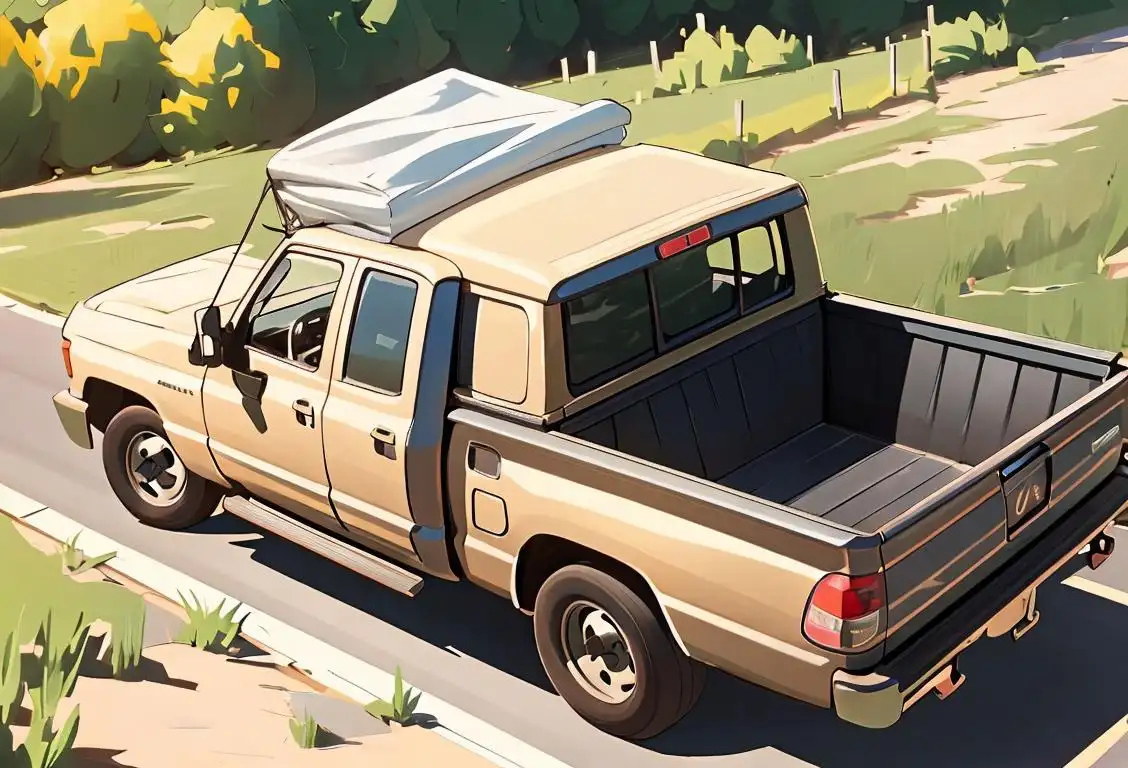National Secure Your Load Day

Hey there, load warriors! Grab your bungee cords, tie-downs, and duct tape because it's time to celebrate National Secure Your Load Day!
When is Secure Your Load Day?
It's national secure your load day on the 6th June.
The Cargo Conundrum
Picture this: you're cruising down the highway, enjoying your favorite tunes on the radio, when suddenly a mattress comes careening towards your windshield. Yikes! Or how about that time you narrowly avoided hitting a rogue shopping cart that flew off the back of a pickup truck? It's incidents like these that make National Secure Your Load Day an essential observance on the calendar.
A Load of Responsibilty
Originating from the need to raise awareness about the importance of securing loads on vehicles, National Secure Your Load Day encourages everyone to take responsibility for making our roads safer. Whether you're hauling furniture, building materials, or even a giant inflatable dinosaur, it's crucial to ensure that your load is properly secured to prevent any unexpected flying objects.
Strap It, Tie It, Lock It Down!
So, how can you secure your load like a pro? Here are a few tips to keep in mind:
- Invest in high-quality tie-downs and straps.
- Make sure your load is evenly distributed and balanced.
- Double-check that everything is properly secured before hitting the road.
- Avoid overloading your vehicle.
- Use additional measures like netting or tarps to add an extra layer of protection.
Remember: Safety First!
Not only does properly securing your load prevent accidents, but it also shows that you care about the safety of others on the road. So, let's all channel our inner MacGyver and make use of those bungee cords and ratchet straps to ensure that our cargo stays put.
History behind the term 'Secure Your Load'
1942
The Birth of Load Securement
During World War II, there was a drastic increase in the transportation of military equipment, supplies, and personnel. In order to ensure the safety of these shipments, the term 'secure your load' was coined. It referred to the practice of properly fastening and stabilizing cargo to prevent accidents and damage during transportation.
19th century
The Rise of Horse-Drawn Carriages
During the 19th century, horse-drawn carriages became a prevalent mode of transportation. These carriages were used to transport goods and materials, but there was a growing concern about the safety of these loads. The risk of items falling off and posing a danger to other road users was significant.
1956
The Implementation of Federal Regulations
Recognizing the need for uniform guidelines regarding load securement, the United States government implemented the Federal Motor Carrier Safety Regulations (FMCSR) in 1956. These regulations outlined the minimum standards for securing cargo on commercial vehicles to ensure public safety on the road. 'Secure your load' became a commonly used phrase to adhere to these regulations and prevent potential hazards.
Early 20th century
Introduction of Securement Techniques
As the use of horse-drawn carriages continued, various methods of securing loads were introduced. Ropes, nets, and straps became common tools used to keep items in place during transportation. These techniques aimed to minimize the risk of accidents caused by falling objects.
1970
Public Awareness Campaigns
With an increasing number of accidents caused by improperly secured loads, public awareness campaigns were launched in the 1970s to educate drivers and the general public about load securement. These campaigns emphasized the importance of securing loads to prevent accidents, injuries, and road debris. 'Secure your load' became a widely recognized phrase associated with responsible driving and cargo transportation.
Mid-20th century
Transition to Motor Vehicles
With the advent of motor vehicles, the need for load securement became even more crucial. As trucks and vans replaced horse-drawn carriages, the potential dangers of unsecured loads were amplified due to increased speed and heavier cargo capacities. The importance of properly securing loads gained further attention.
1970s
Regulations and Safety Standards
During the 1970s, governments around the world recognized the need for standardized load securement regulations. Organizations, such as the Federal Motor Carrier Safety Administration (FMCSA) in the United States, established safety standards and guidelines for securing cargo on motor vehicles. These regulations aimed to enhance road safety and minimize accidents caused by falling or shifting loads.
1997
Focus on Environmental Impact
In the late 1990s, there was a growing concern about the environmental impact of unsecured loads. Loose items on vehicles often resulted in littering and debris on roadways, which posed risks to wildlife and the ecosystem. 'Secure your load' campaigns began highlighting the environmental consequences of neglecting load securement, further emphasizing the need to protect the environment by properly securing cargo.
Present
Ongoing Road Safety Measures
Today, 'secure your load' continues to be a crucial message within road safety initiatives and driver education programs. Governments, transportation companies, and advocacy groups worldwide promote regular load inspections, the use of appropriate securing devices, and secure packaging to prevent accidents, injuries, and environmental damage. By spreading awareness and emphasizing the significance of load securement, efforts are made to create safer roads and protect the well-being of all road users.
Present Day
Continued Emphasis on Load Securement
Today, the term 'secure your load' is a common phrase used to remind drivers to properly fasten and stabilize their cargo. This practice is essential to prevent accidents, injuries, and property damage. It encompasses not only commercial vehicles but also personal vehicles when transporting large or bulky items. Proper load securement remains a vital aspect of road safety in our modern transportation systems.
Did you know?
Did you know that the concept of securing loads has been around for centuries? Back in ancient times, sailors used ropes and knots to secure cargo on their ships. They would be so proud of us and our modern tie-down techniques!Tagged
awarenessFirst identified
6th June 2018Most mentioned on
6th June 2018Total mentions
107Other days
Nurses Day
Former Prisoner Of War Recognition Day
Press Day
Handloom Day
Heroes Day
Memorial Day
Dance Day
Bestfriends Day
Liberation Day
Love Your Pet Day









